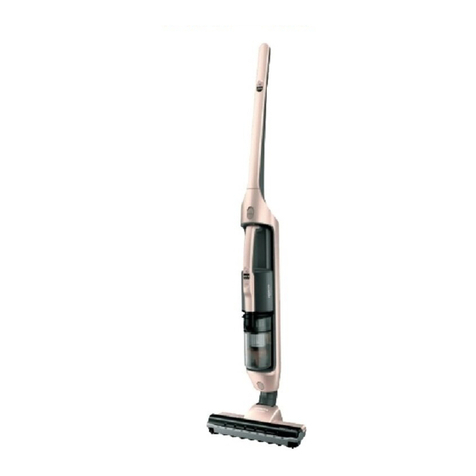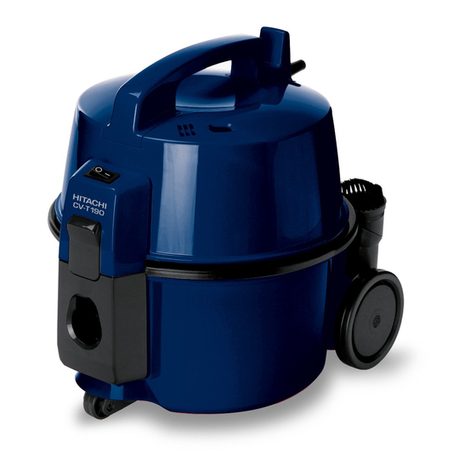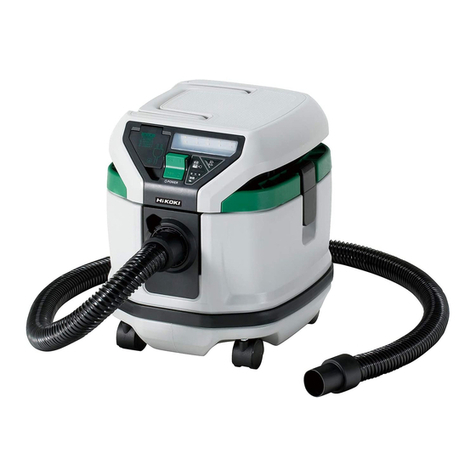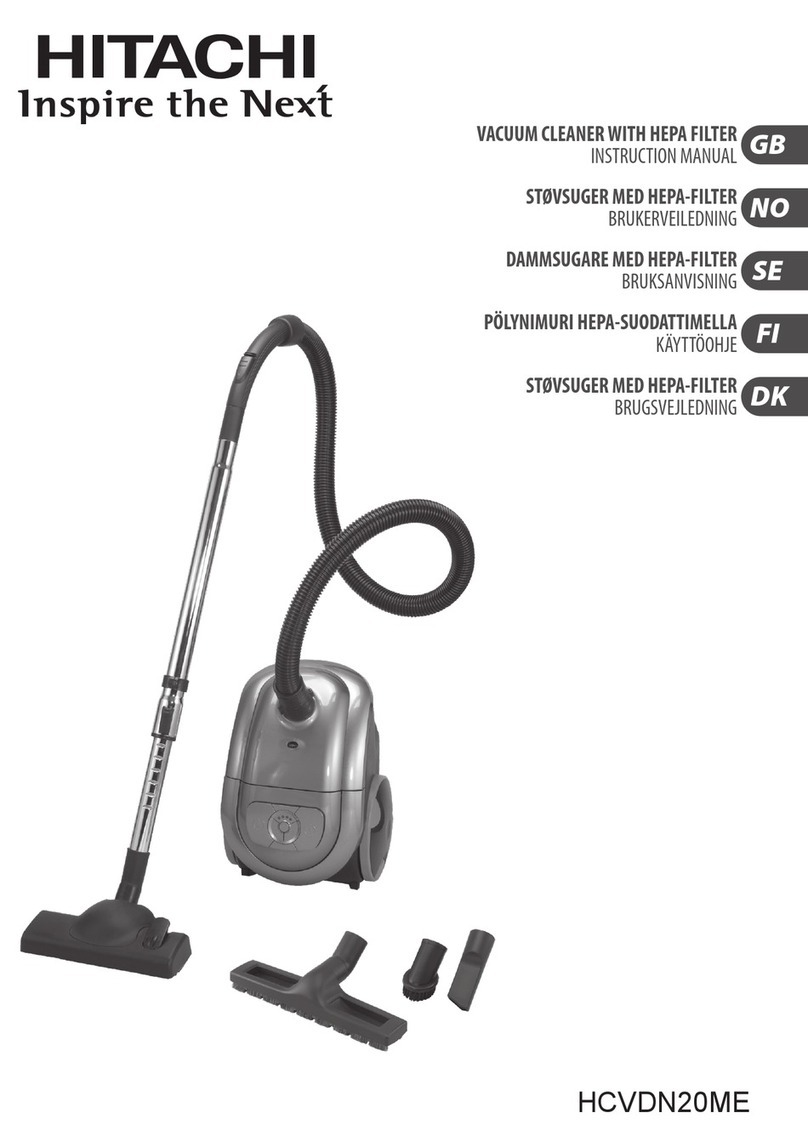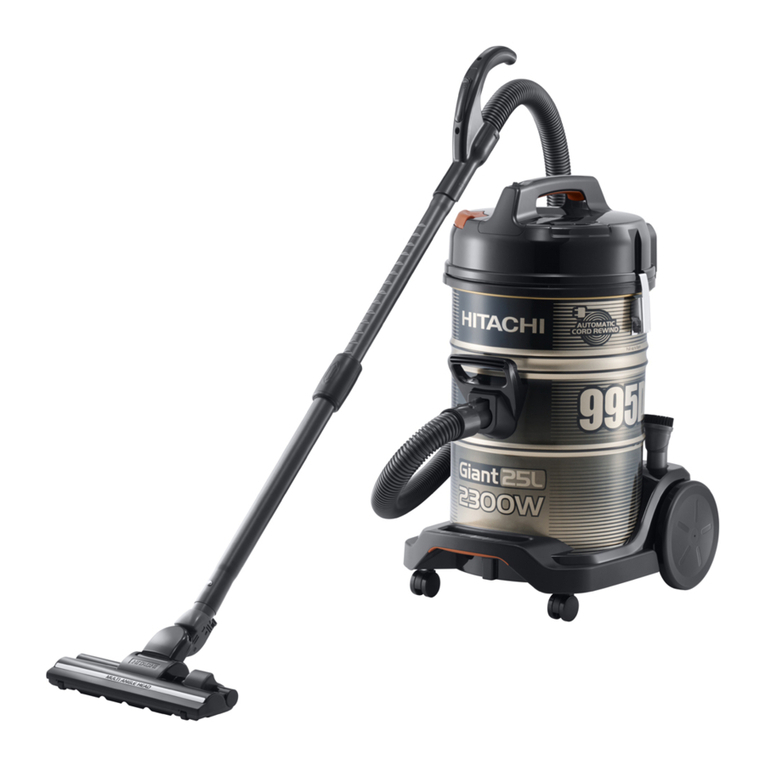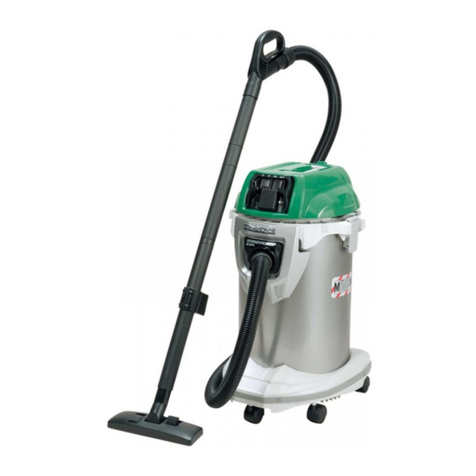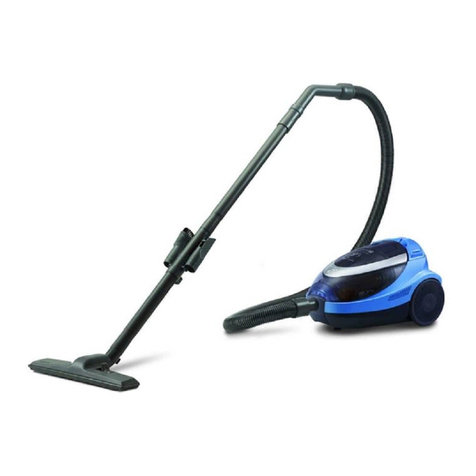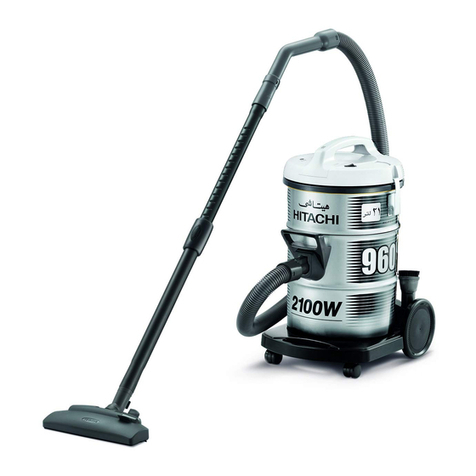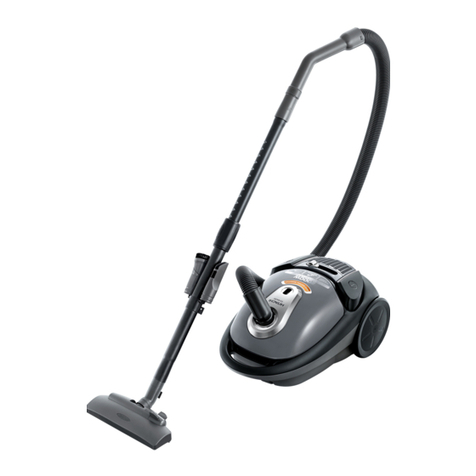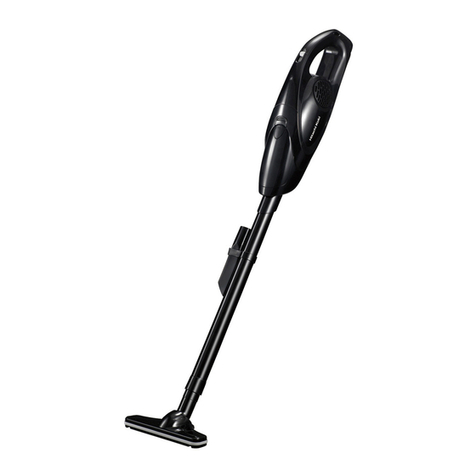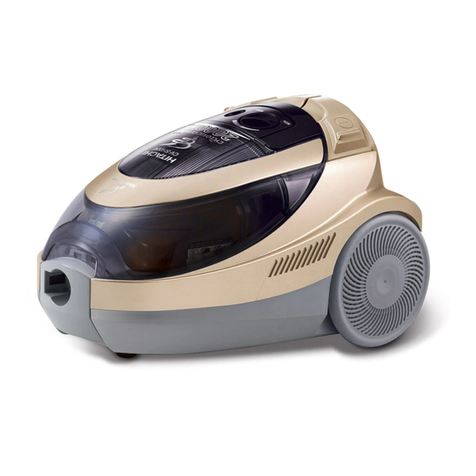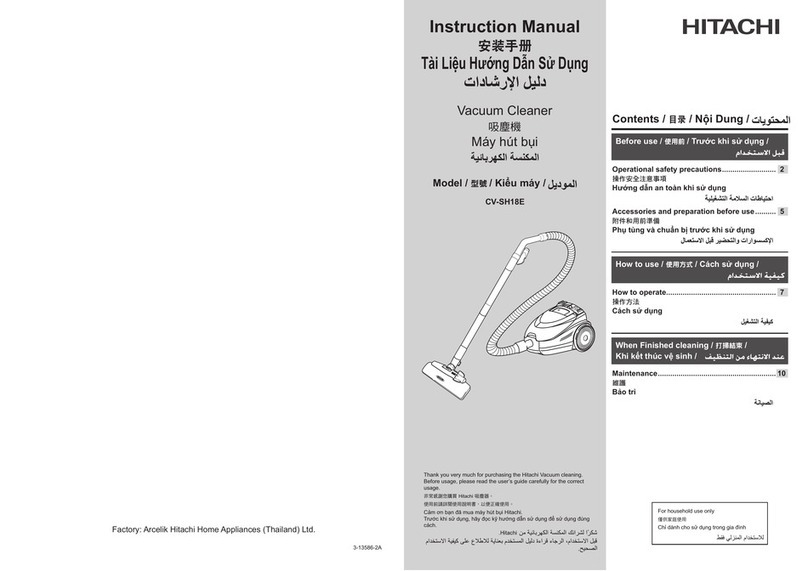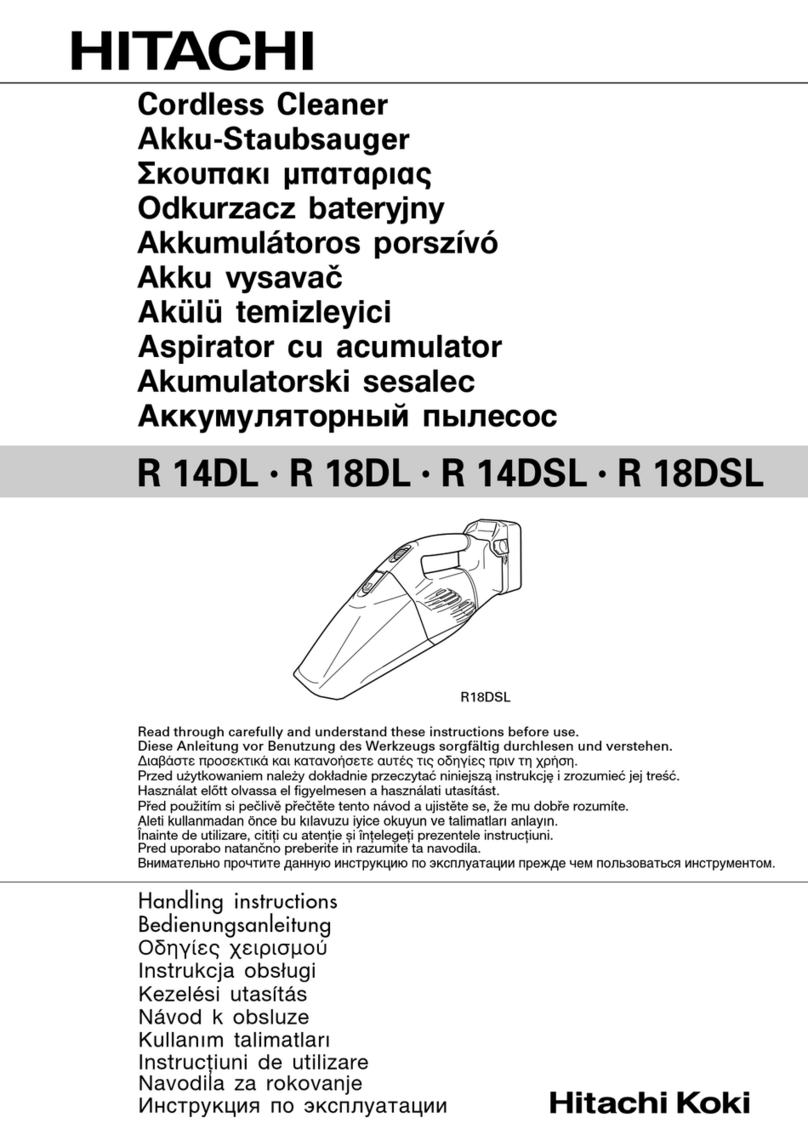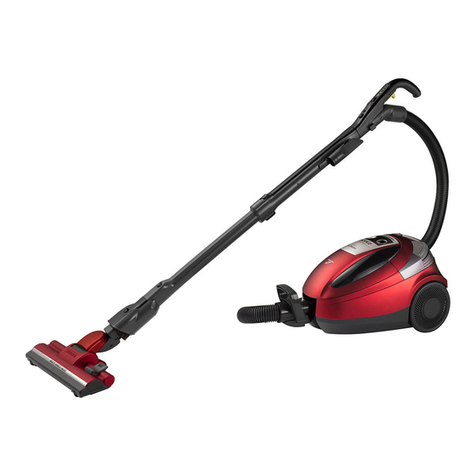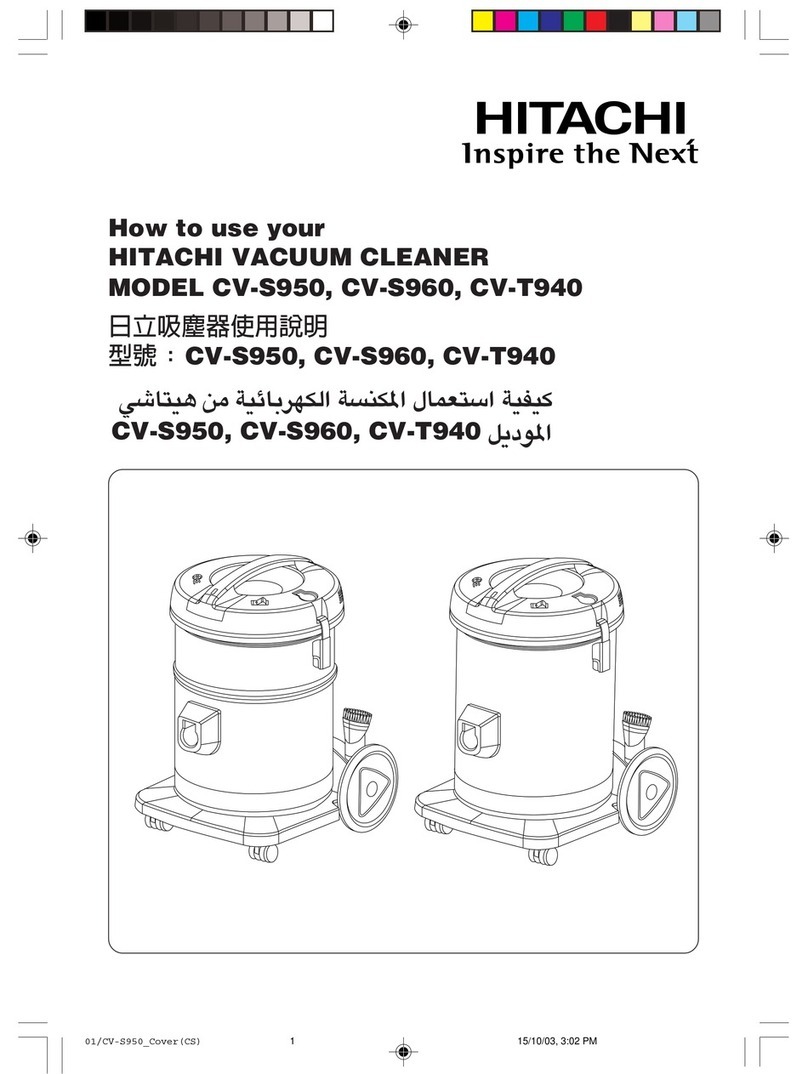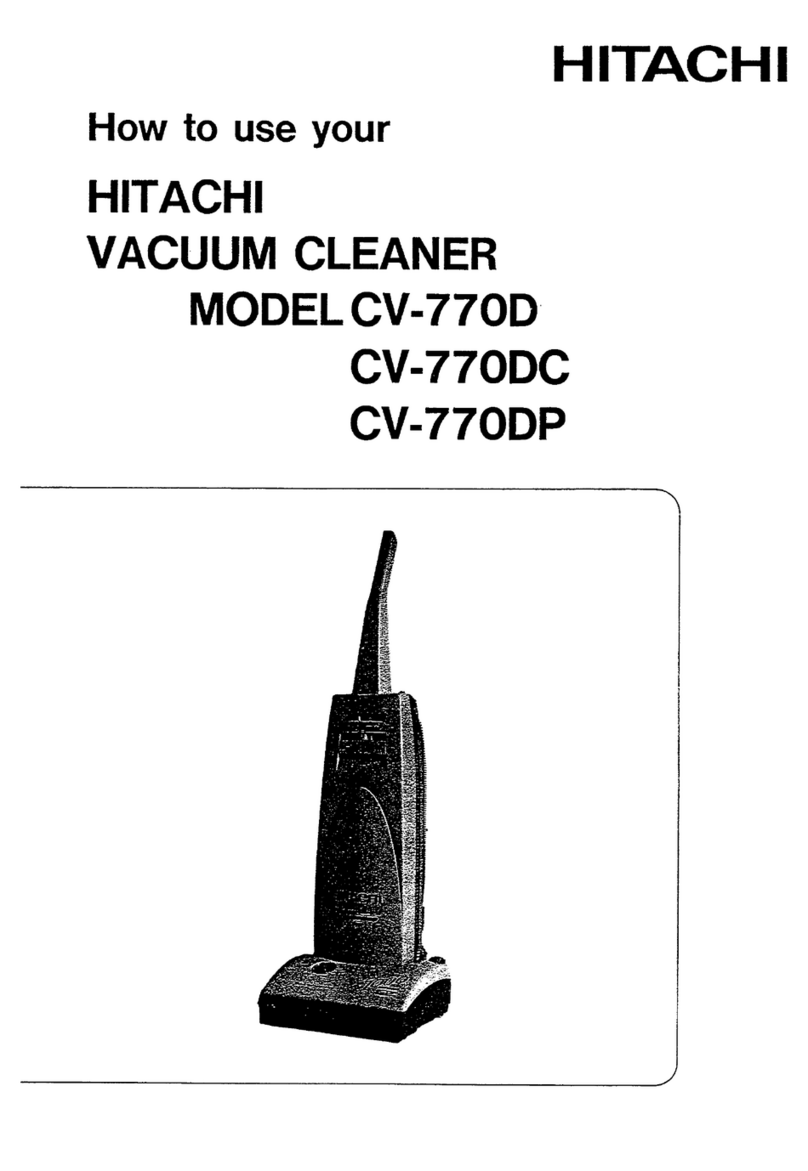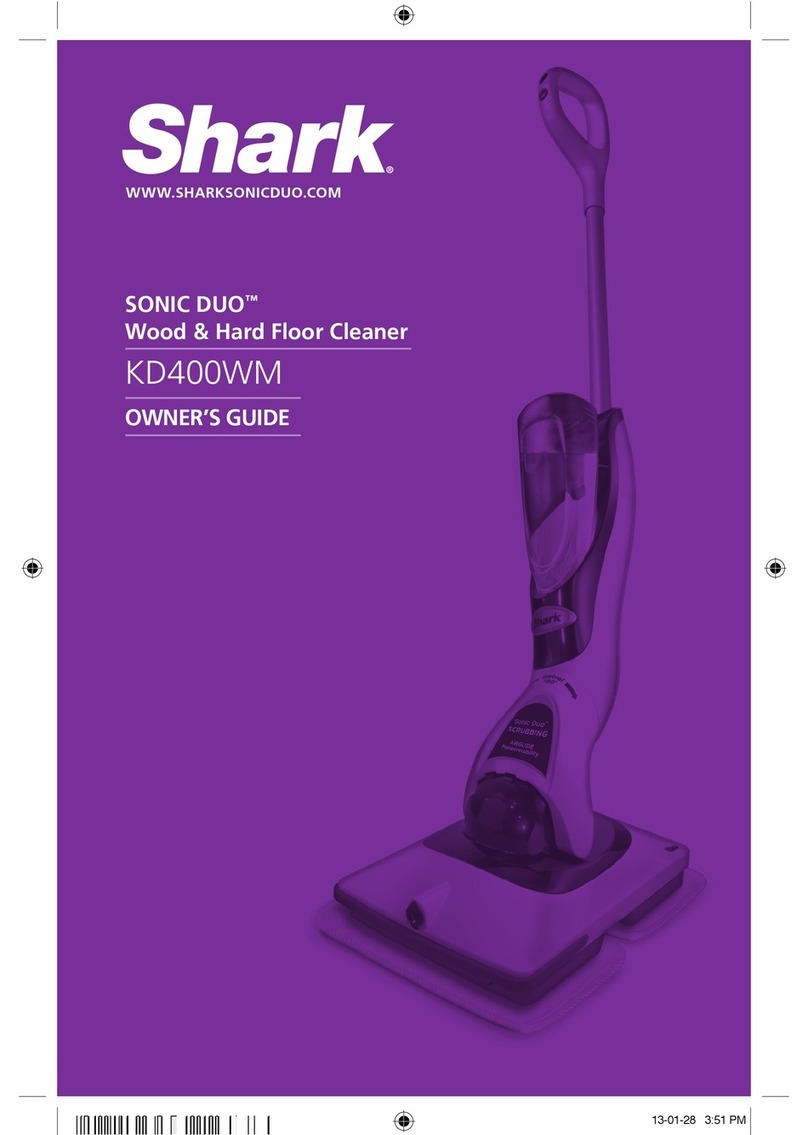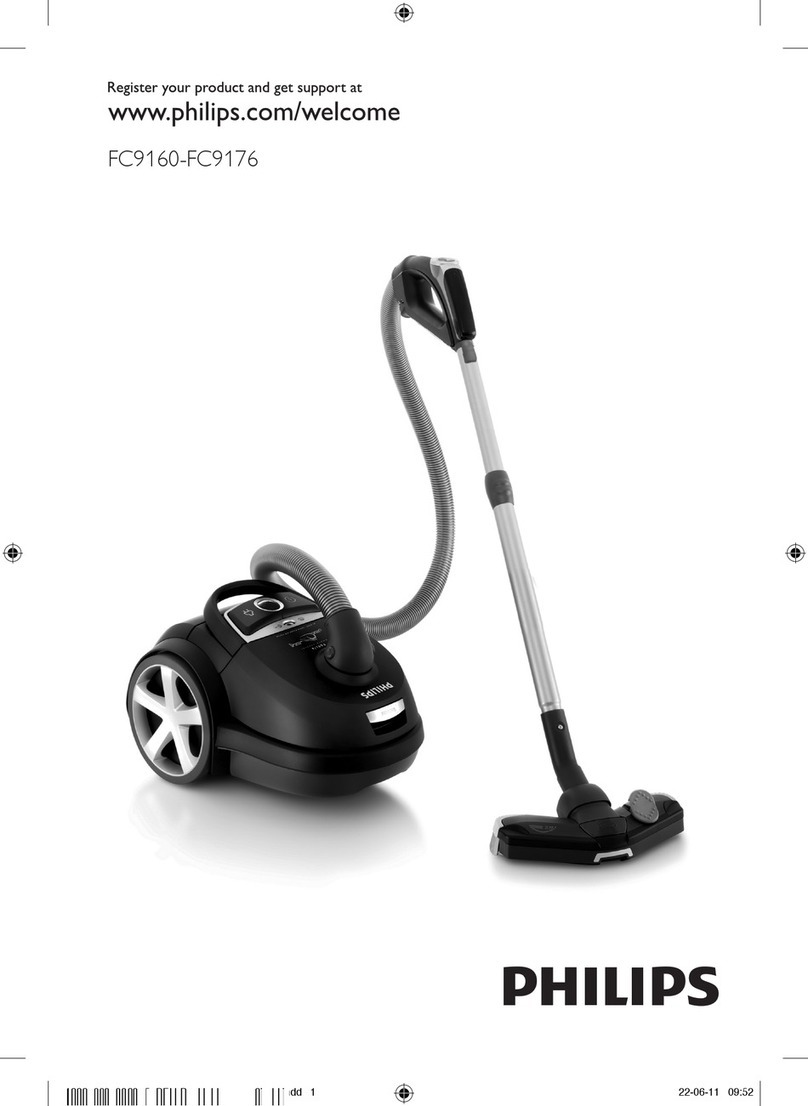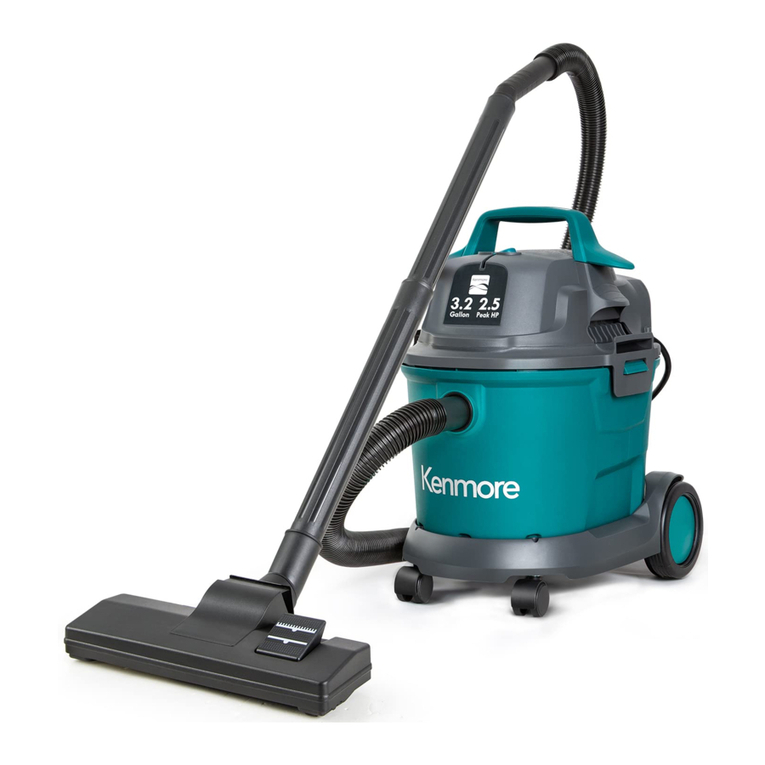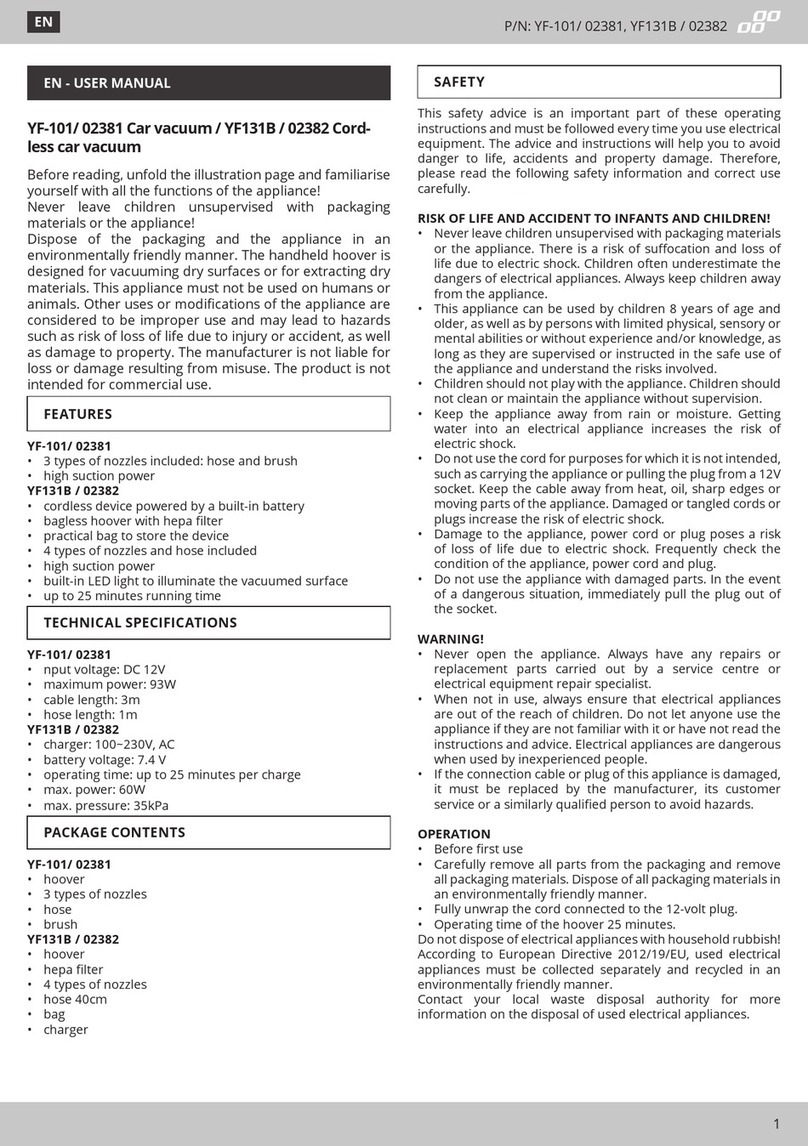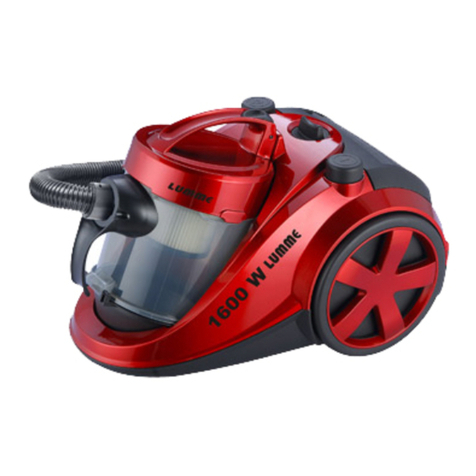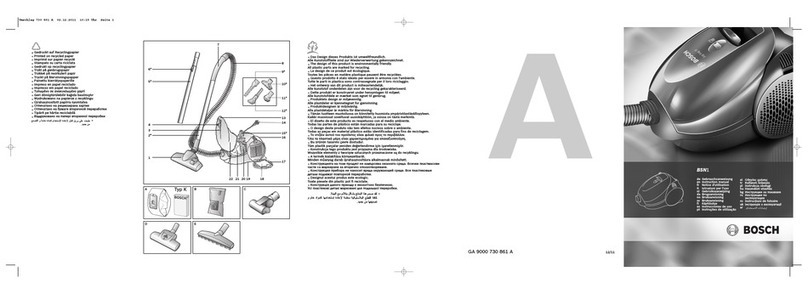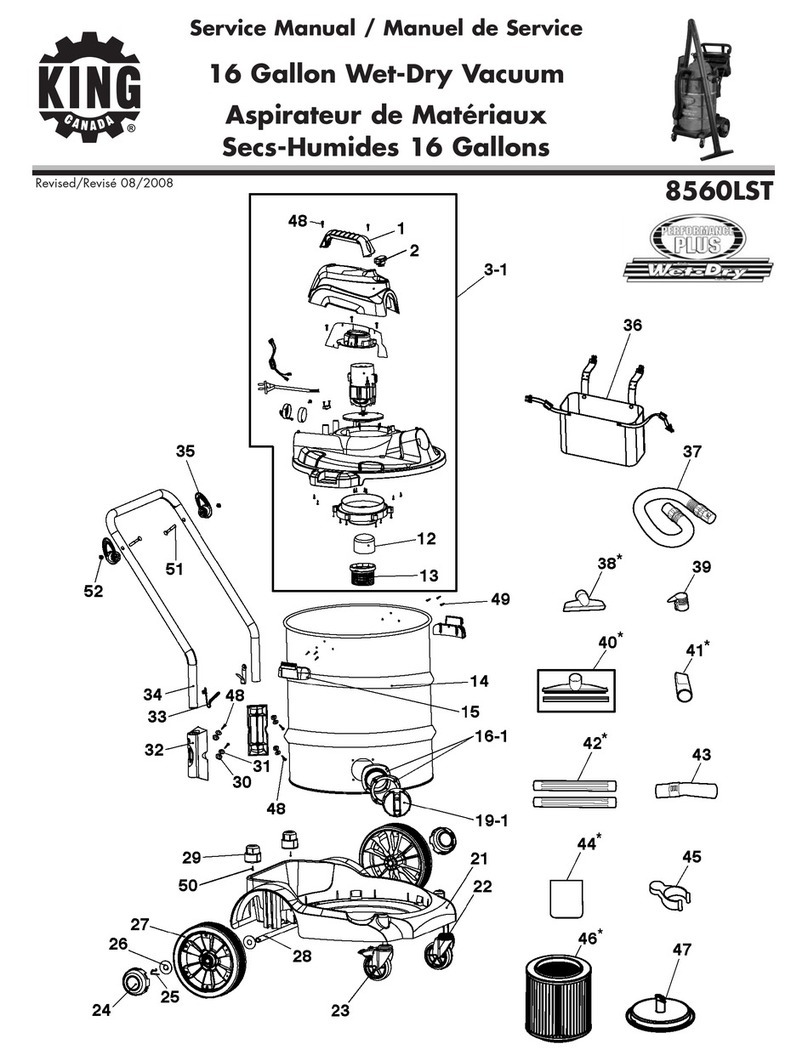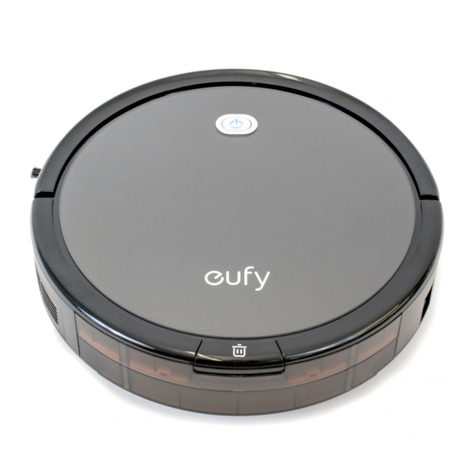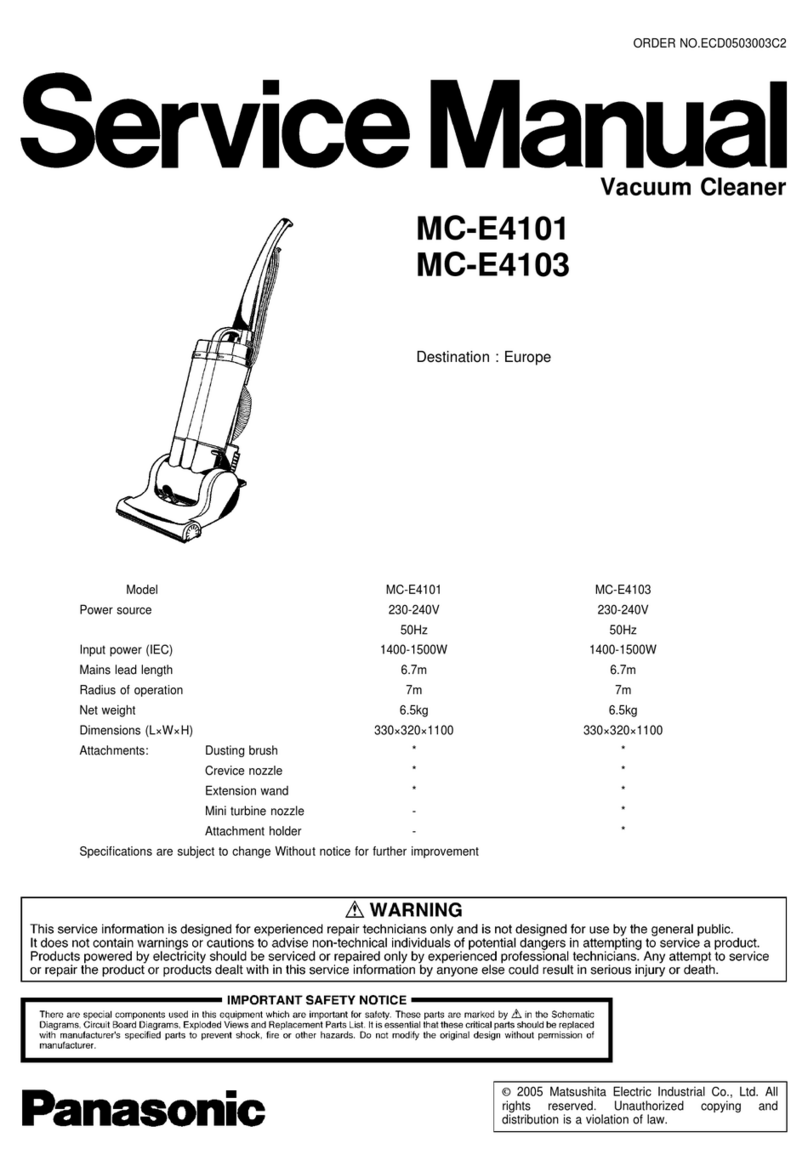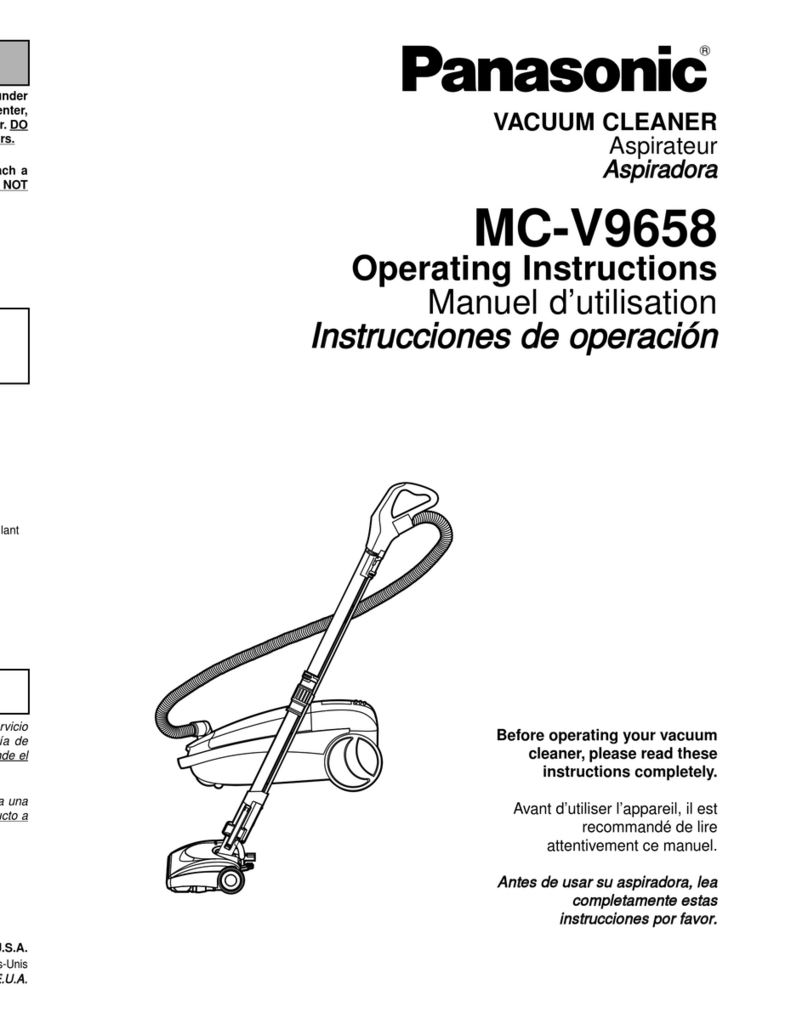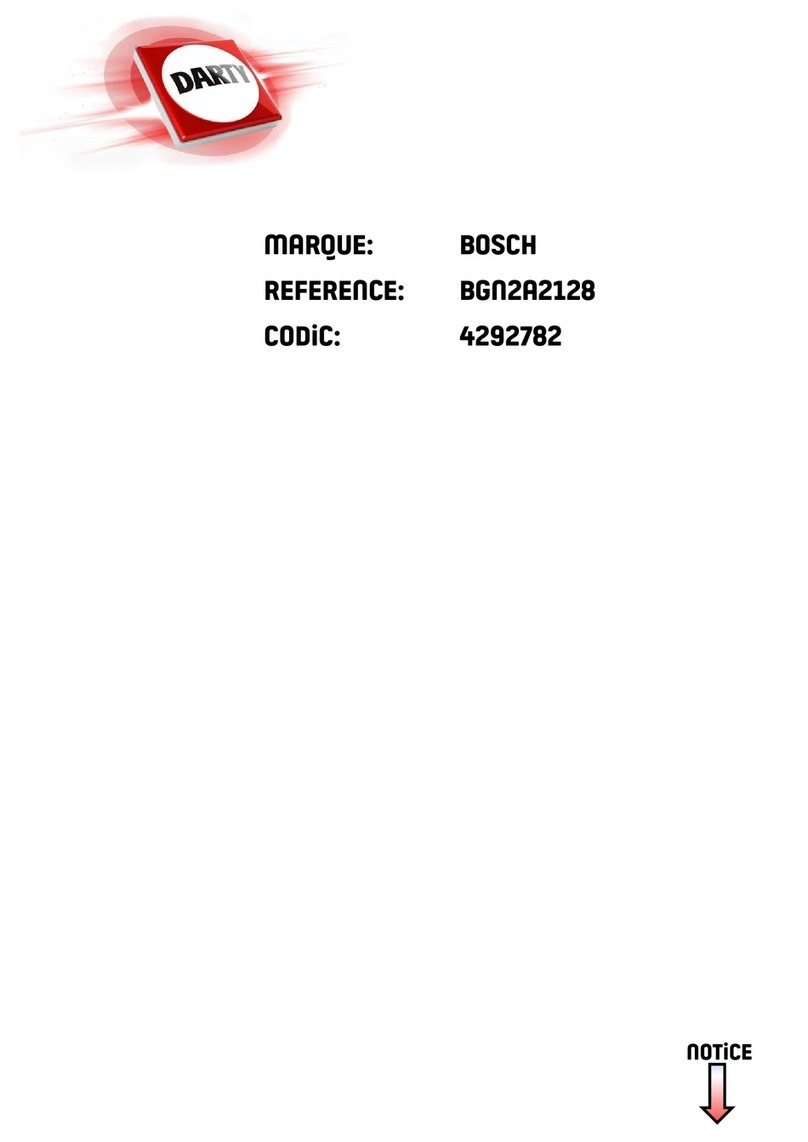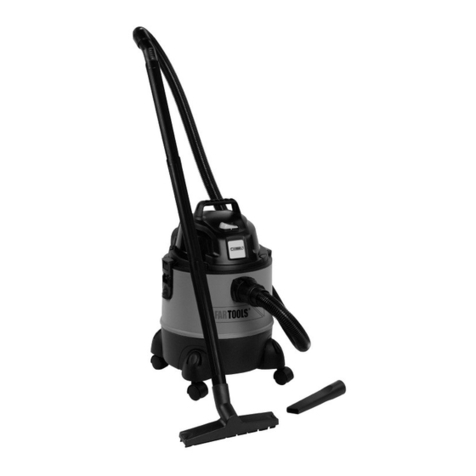
WARNING :
Electrical shock could occur if used outdoors or on wet surfaces.
Before you plug in your Hitachi Vacuum Cleaner, make sure that the voltage indicated on the rating plate located on the
back of the vacuum cleaner is the same as your local power supply.
Your vacuum cleaner is marked with this symbol. This means that electrical and electronic
products shall not be mixed with general household waste. European Community
countries (*), Norway, Iceland and Liechtenstein should have a dedicated collection
system for these products.
Do not try to dismantle the system yourself as this could have harmful effects on your
health and on the environment. The dismantling and disposal of refrigerant, oil and other
parts must be done by a qualified installer in accordance with relevant local and national
regulations.
Vacuum Cleaners must be treated at a specialized treatment facility for re-use, recycling and recovery and
shall not be disposed of in the municipal waste stream. Please contact the installer or local authority for more
information.
*subject to the national law of each member state.
Ihr Staubsauger ist mit diesem Symbol merklich. Dies bedeutet, daßelektrische und
elektronische Produkte nicht mit allgemeinem Haushaltsabfall gemischt werden sollen.
Länder der Europäischen Gemeinschaft (*), Norwegen Iceland und Liechtenstein sollten
ein hingebungsvolles Sammlungssystemfür diese Produkte haben.
Versuchen Sie nicht, das System Sie selbst zu demontieren, weil dies schädlich
Wirkungen auf Ihre Gesundheit und auf die Umgebung haben konnte. Die Demontierung
die Entsorgung des kühlenden, Öls und andere Teile von einem qualifizierten
Systemverantwortlichen entsprechend relevanten lokalen und nationalen Bestimmungen
gemacht werden müssen.
Ihr Staubsauger mußan einer spezialisierten Behandlungsbegabung für die
Wiederverwendung, die Wiederverwertung und die Erholung behandelt
werden und soll nicht im kommunalen Abfallstrom losgeworden werden.
Bitte wenden Sie sich an den Systemverantwortlichen oder lokalen Autorität
wegen weiterer Informationen.
*abhängig vom nationalen Gesetz jedes Mitgliedsstaats.
CAUTION :
If the supply cord is damaged, it must be replaced by the manufacturer or its service agent or a similarly qualified person in
order to avoid a hazard.
This product conforms with the protection requirements of council directives 89/336/ECC relating to electromagnetic
compatibility, and 73/23/ECC relating to electrical equipment designed for use within certain voltage limits.
ERHALTUNG DER REINIGUNGSLEISTUNG UND VERMEIDUNG VON UNFÄLLEN
•Stets nach dem Entfernen von Staub den Stofffilter wieder anbringen.
Wenn der Staubsauger ohne seinen Filter benutzt wird, wird der Staub direkt in die mechanischen Teile hineingesaugt und kann
so zu Motorschäden führen.
•Während des Tragens des Staubsaugers nicht an die Klemme schlagen oder auf sie drücken. Dadurch kann der Staubbehälter
herausfallen und Verletzungen verursachen.
•Nicht den Luftstrom blockieren.
Blockierung oder Behinderung der Ansaugöffnung, der Teppich- und Fußbodendüse, des Verlängerungsrohres usw. oder
der Abluftöffnung kann zu einem Leistungsabfall und Überhitzung des Motors führen.
•Zur Vermeidung von Feuergefahr weder Streichhölzer, Kaminasche noch Rauchgegenstände mit dem Staubsauger aufsaugen.
•Keinen nassen Schmutz mit dem Staubsauger aufsaugen und den Staubsauger nur im Trockenen benutzen, da Feuchtigkeit
dem Motor und anderen mechanischen Teilen schaden kann.
•Das Staubsaugergehäuse und die Zubehörteile können mit einem mit Spülmittel angefeuchteten Tuch abgewischt werden.
Zur Reinigung keine Lösungsmittel verwenden.
•Den Netzschalterbereich möglichst mit einem trockenen Lappen reinigen und Wasserspritzer in dem Bereich vermeiden, da
Feuchtigkeit einen Kurzschluss verursachen kann.
•Die Kohlebürsten des Motors bestehen aus einer besonderen Zusammensetzung.
Beim Auswechseln der abgenutzten Kohlebürsten nur Hitachis spezielle Kohlebürsten für den Hitachi-Staubsauger verwenden.
•Der Staubsauger ist kein Spielzeug. Es sollte Kindern daher untersagt werden, mit dem Staubsauger zu spielen. Den
Staubsauger nicht unbeaufsichtigt ans Stromnetz angeschlossen lassen.
WARNUNG :
Bei Verwendung im Freien oder auf nassen Böden besteht die Gefahr eines electrischen Schlages.
Bevor Sie den Netzstecker des Hitachi-Staubsaugers einstecken, vergewissern Sie sich, dass die auf dem Leistungsschild an der
Rückseite des Staubsaugers angegebene Spannung mit der Spannung lhrer Netzversorgung übereinstimmt.
VORSICHT :
Falls das Netzkabel beschädigt ist, muss es entweder vom Hersteller oder einer Kundendienstfir ma oder einer qualifizierten
Person ausgewechselt werden, um mögliche Gefahren zu vermeiden.
Dieses Produkt stimmt mit den folgenden europäischen Richtlinien überein: (89/336/EWG) “Richtlinie des Rates zur Angleichung
der Rechtsvorschriften der Mitgliederstaaten über elektromagnetische Verträglichkeit”und (73/23/EWG) “Richtlinie des Rates über
Niederspannungsbetriebsmittel”.
–7 –
